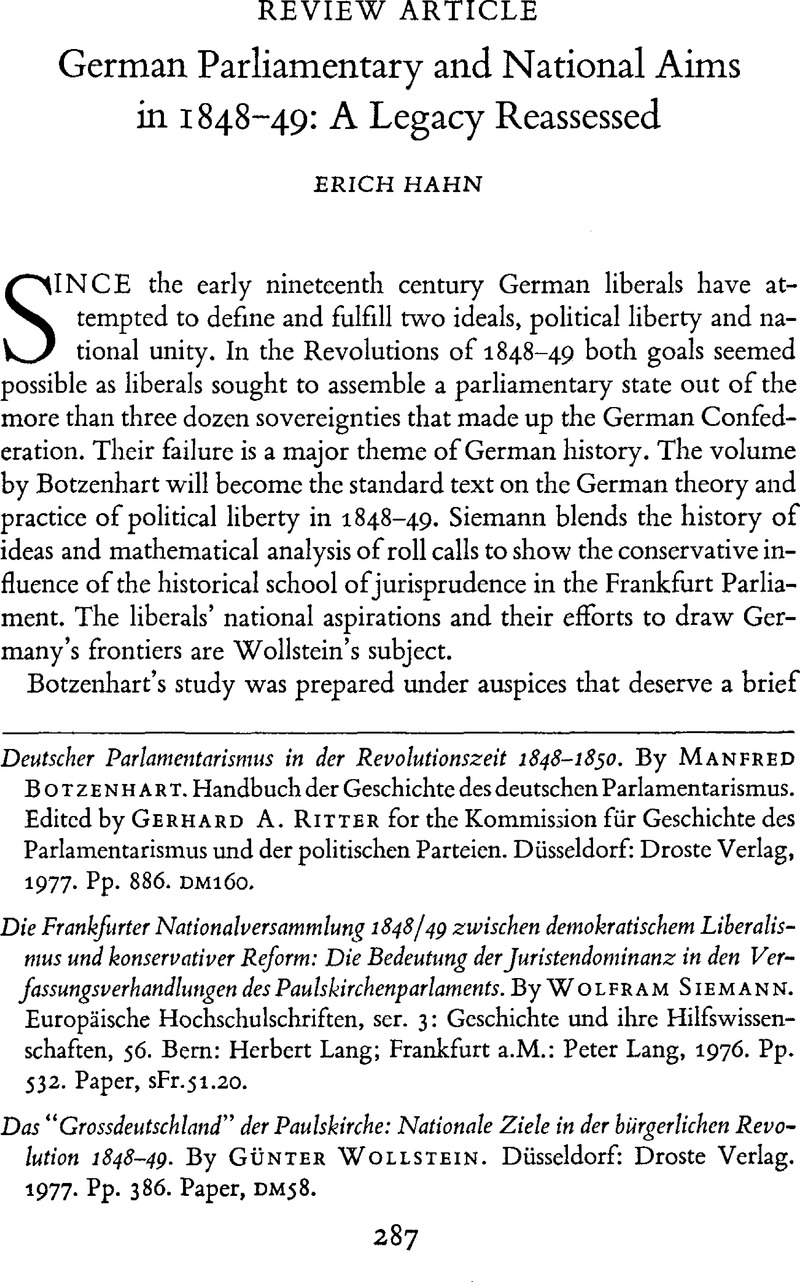No CrossRef data available.
Published online by Cambridge University Press: 16 December 2008

1. Langewiesche, Dieter, “Die Anfänge der deutschen Parteien: Partei, Fraktion und Verein in der Revolution von 1848–49,” Geschichte und Gesellschaft 4 (1978): 324–61Google Scholar, confirms Botzenhart's views about the effectiveness of the caucus system in Frankfurt. He also stresses that before and after 1848 moderate liberals were prejudiced against extraparliamentary party organizations, which they associated with radicalism.
2. Krieger, Leonard, The German Idea of Freedom: History of a Political Tradition (Boston, 1957).Google Scholar
3. Namier, Lewis, 1848: The Revolution of the Intellectuals (London, 1946).Google Scholar
4. Deutscher Bundestag, Stenographischer Bericht, Mar. 29, 1979, pp. 1159–60. In a similar article Carstens notes in passing that the Frankfurt Constitution was intended for a unified Germany, Die Zeit (Canada edition), Mar. 30, 1979, p. 22.